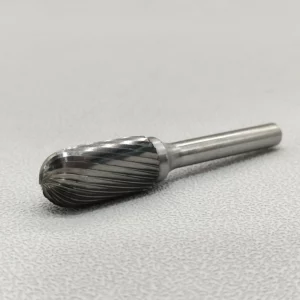Burr bits for metal are essential tools in metalworking processes, enabling precise shaping, deburring, and finishing of various metal surfaces. This article aims to provide a comprehensive understanding of burr bits, their applications, and their significance in metalworking.
Table of Contents
ToggleDefinition of Burr Bits:
Burr bits, also known as carbide burrs or rotary files, are cutting tools with small, often tooth-shaped cutting edges. These bits are commonly made from tungsten carbide or high-speed steel, ensuring durability and long-lasting performance. Burr bits are available in various shapes, such as cylindrical, ball, cone, and flame, each designed to serve specific purposes in metalworking.
Applications of Burr Bits in Metalworking:
Shaping and Contouring: Burr bits are extensively used to shape and contour metal surfaces, allowing artisans to create intricate designs or modify existing ones with precision.
Deburring: Metal components often have sharp edges or burrs after machining processes. Burr bits effectively remove these burrs, ensuring a smooth and safe finish.
Weld Preparation: Burr bits are valuable for preparing weld joints by cleaning and beveling the edges, promoting proper welding penetration and improving weld quality.
Engraving and Etching: With the right burr bit, metalworkers can etch intricate patterns or engrave precise markings on metal surfaces, adding aesthetic value to the finished products.
Hole Enlargement and Chamfering: Burr bits are utilized to enlarge existing holes in metal or create chamfered edges, facilitating the insertion of screws or bolts and enhancing the overall functionality of the metalwork.
Significance of Burr Bits in Metalworking:
Precision and Accuracy: Burr bits enable metalworkers to achieve precise and accurate results, ensuring the desired dimensions and surface finishes.
Versatility: With various shapes and sizes available, burr bits offer versatility in tackling different metalworking tasks, catering to the specific requirements of each project.
Time and Cost Efficiency: By efficiently removing burrs, shaping, or modifying metal surfaces, burr bits save time and reduce the need for additional manual finishing processes, thus increasing productivity and minimizing costs.
Durability: Made from robust materials like tungsten carbide or high-speed steel, burr bits exhibit exceptional durability, withstanding the demanding conditions of metalworking operations.
Flexibility: Burr bits can be used with handheld rotary tools, die grinders, or CNC machines, providing flexibility in terms of equipment choices and adaptability to various metalworking setups.
Burr bits for metal play a crucial role in metalworking processes, enabling precise shaping, deburring, and finishing of metal surfaces. Their versatility, precision, and cost-efficiency make them indispensable tools for artisans and professionals in the metalworking industry. Whether it’s shaping, deburring, or engraving, burr bits provide the necessary cutting power and accuracy to achieve outstanding results. Understanding the applications and significance of burr bits empowers metalworkers to utilize these tools effectively and elevate the quality of their metalwork.

